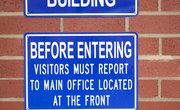School-age children spend most of their time surrounded by their peers. Classmates, teammates and fellow club members far outnumber the adults in students' lives. All types of peer pressure can have a heavy influence in the lives of children in grades two through twelve.
Defining Peer Pressure
From birth through age six, the family unit crafts a child's sense of identity. Parents and siblings affect a child's likes, dislikes, tastes in clothing, food and music and, perhaps most importantly, values. Once children enter school, they form connections to the larger group of their peers. This group brings new ideas and experiences and can influence mental health. Peer pressure occurs when a student's actions are influenced by this group. The "pressure" happens when the peer group suggest or insist on actions that stray from the child's normal behavior and values.
Though the phrase is often used negatively, peer influence can sometimes cause positive outcomes.
Negative Peer Pressure
Peer pressure leads to some disturbing negative behavior and decision-making in young people. About 30 percent of students are offered drugs by their friends in middle or high school. Just over 75 percent of high school students have tried alcohol. Half of all teenagers feel pressured by their peers about sexual activity. In a survey conducted by Survelum Public Data Bank, students felt pressured by their peers between 35 and 49 percent of the time.
Psychiatrists attribute the power of peer pressure to a child's growing desire to fit in to a group -- particularly if the group has a social status within the school. This can affect the child’s sense of self-esteem and can lead to risky behaviors. Negative peer influence can be detrimental to a child in their teen years, effecting everything from their social skills to self-confidence and may even cause drug use.
Positive Peer Pressure
Thankfully, peer pressure can also have positive effects. For example, wanting to join an athletic group of friends may compel an otherwise sedentary student to try out for the soccer team. In the Survelum Public Data Bank survey on the effects of peer pressure, 51 percent of teenagers felt that peer pressure was sometimes positive. One respondent wrote, "...sometimes it [peer pressure] can help you gain confidence...." Other examples of positive peer pressure include students encouraging a classmate to run for school president, or friends suggesting that a talented peer try out for a choir solo.
These are examples of some positive behaviors peers can influence each other in the good decision making realm. Like it or not, peers play an important role in a child’s life no matter the age group.
Peers vs Parents
Researchers differ over whether parents or a student's peers has more influence over that student's behavior. In a study published in The Journal of Primary Prevention, researchers concluded that when parents tolerate drug use or substance use, teens are more likely to use illicit drugs. They also noted that when parents closely supervise their teens, the students were less likely to have friends who used drugs.
Conversely, in her book "The Nurture Assumption: Why Children Turn Out the Way They Do," Judith Rich Harris argues that peers have more influence than parents in shaping children's behavior.
Related Articles
References
Resources
Writer Bio
Diane Kampf has more than 20 years of teaching experience ranging from middle school to college freshmen. She holds a Master of Arts degree in creative writing and English literature and a New York State Secondary Teacher Certificate. She has written educational materials for Learning Express, LLC, Kaplan and Pearson.










